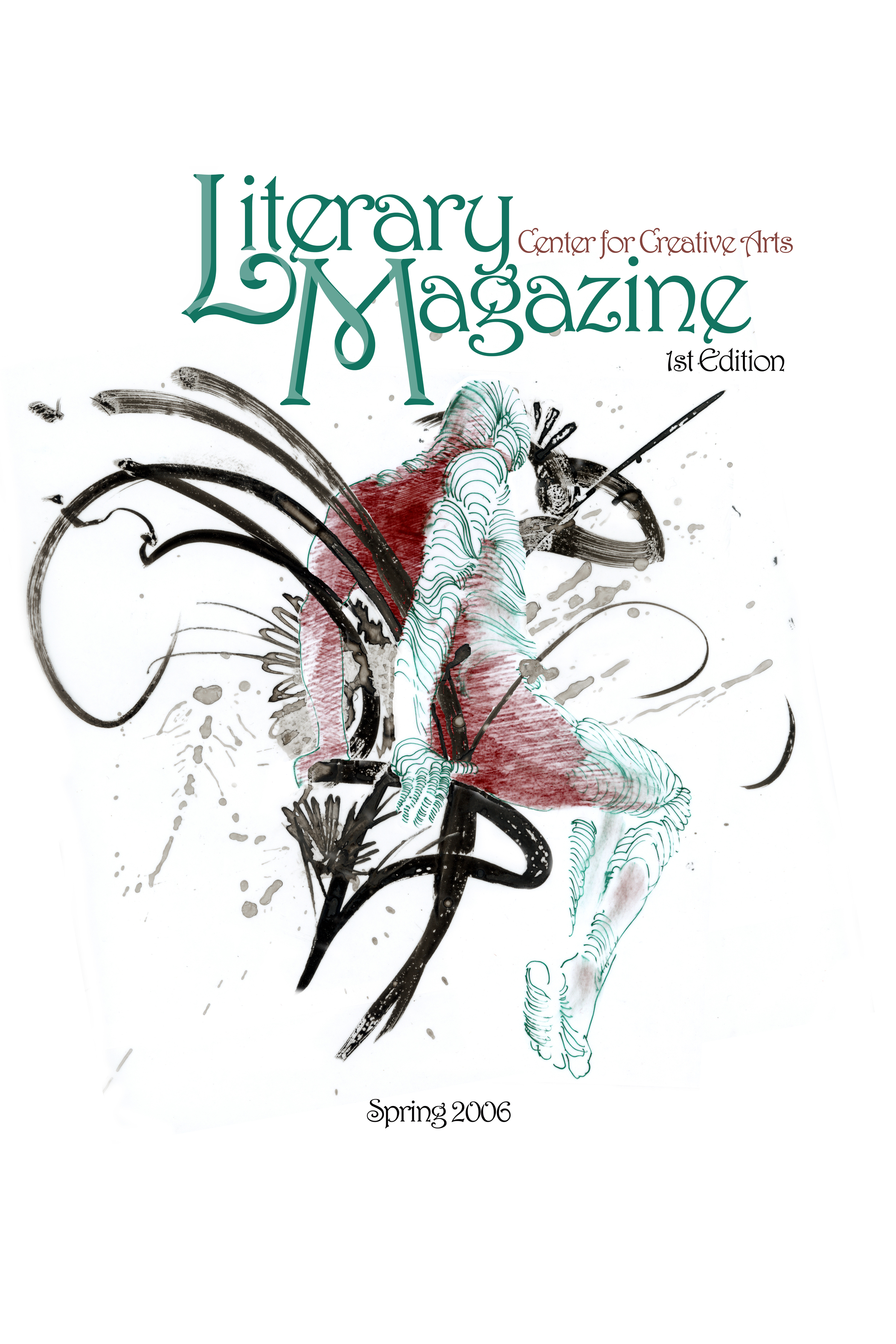.
As an Art teacher I had been asked to create an illustration for the cover of the first edition of the school’s Literary Arts Magazine, featuring the best of student work. The magazine would feature essays, short stories, and poetry written by students of Center for Creative Arts in Chattanooga, Tennessee, an arts magnet school.
While I laid out my materials I began reciting a mantra I had spoken many times before, but had never brought into my studio. My heart began pounding with excitement.
Working the ink, a figure’s mass was implied by its contours, a chair in strokes that curved, swept and flew boldly across the page. Like a recurring memory from a dream, an inspired marriage of the ordinary and the surreal. To my surprise the drawing evolved into a moment where nothing is exactly as it seems, and art and its muse are a fluid affair, inspiration coming in bursts of insight.
When I presented the drawing it was well received by both students and faculty, but privately the Math teacher caught me aside. Pointing at the petalled form reaching out of the figure’s chest she asked,
“What is That…?”
I couldn’t muster a mumble about balance, directional dynamics, or thrust. None of those elements had come to mind. These were not calculated marks, yet to me everything seemed in its place, dynamic and balanced.
The question itself was so literal as to defy any possibility of explanation, or to allow an extrapolation on a metaphor. There was not a right or wrong answer, no enlightenment would be ciphered from a rational insight.
I had been lost in trance to the rhythm of an ancient prayer and open to other patterns of thought and suggestion. Drawing my brush across the paper, as Cézanne said, “…as the peach tree makes its blossoms.”
There followed an awkward silence.
. . . . .
.
I had been using the Gayatri mantra for healing the landscapes where I lived. The Civil War battlefields, and The Trail of Tears and the dark history of slavery are energetic fixtures of the mountains and valleys of Chattanooga. Believed to be nine thousand years old, the Gayatri mantra today is one of the world’s great prayers.
Once guarded and reserved for initiates into Hindu spiritual hierarchy, today it is widely practiced as a path to enlightenment.
The Gayatri mantra has a sonorous, prosaic rhythm that invokes a satisfying, universal appeal for insight and awakening. With clear intention and focus, the prayer has the power to manifest our deepest wishes for insight and wonder. Usually repeated one hundred and eight times as part of a prayer cycle called a mala, I have repeated it hundreds of thousands of times over the years.
.
. . . . .
.
After a busy day of preparing materials, teaching classes and restoring my classroom the answer came to me out of the blue.
In Hindu histories, the divine is characterized as a being called Narayana. As Narayana lay sleeping a great flower grew out of his chest. And the flower blossomed into the four-faceted being, Brahma the Creator.
“The Gayatri mantra spirals through the entire universe from the heart of the chanter, appealing for peace and divine wisdom in the form of a divine flame shining in the Sacred Heart Center.”
Like a heartbeat. Like a blossom. Like a four hundred pound lotus.
Where asking is its own answer.
.
ॐ भू: भुवः स्वः ।तत्स॑वि॒तुर्वरेण्यं॒भर्गो॑ दे॒वस्य॑ धीमहि ।धियो॒ यो नः॑ प्रचो॒दया॑त् ॥
.
OM BHU
OM BHUVAHA
OM SWAHA
OM MAHA
OM JANAHA
OM TAPAHA
OM SATYAM
OM TAT SAVITUR VARENYAM
BHARGO DEVASYA DHEEMAHI
DHIYO YONAHA PRACHODAYAT
.
Translations in English vary widely:
.
We meditate on the glory of the Creator;
Who has created the Universe;
Who is worthy of Worship;
Who is the embodiment of Knowledge and Light;
Who is the remover of Sin and Ignorance;
May He open our hearts and enlighten our Intellect.
.




